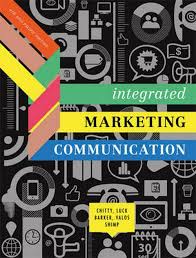Test Bank For Integrated Marketing Communications 4th Edition by Bill Chitty
Digital item No Waiting Time Instant Download
ISBN-10: 0170254305, ISBN-13: 9780170254304
In Stock
Original price was: $75.00.$25.00Current price is: $25.00.
Test Bank For Integrated Marketing Communications 4th Edition by Bill Chitty
Chapter 3 – Persuasion in marketing communications
TRUE/FALSE
1.Motivation is low when a message relates to a person’s present goals and needs.
ANS: F PTS: 1 DIF: Moderate TOP: An integrated model of persuasion
2.Feelings and evaluations are aspects of the affective component of an attitude.
ANS: T PTS: 1 DIF: Moderate TOP: The tri-component model of attitudes
3.The cognitive component of an attitude represents one’s behavioural tendency.
ANS: F PTS: 1 DIF: Moderate TOP: The tri-component model of attitudes
4.Motivation, opportunity and attitude determine each person’s elaboration likelihood (EL) for a particular message.
ANS: F PTS: 1 DIF: Moderate TOP: An integrated model of persuasion
5.Peripheral cues may play a more important role than message arguments in determining the outcome of a persuasive effort.
ANS: T PTS: 1 DIF: Moderate TOP: Peripheral cues
6.Counter-arguments occur when a receiver agrees with a message argument.
ANS: F PTS: 1 DIF: Moderate TOP: The receiver’s initial response
7.In Pavlov’s experiment, the bell was the conditioned stimulus.
ANS: T PTS: 1 DIF: Moderate TOP: Classical conditioning of attitudes
8.The personal relevance that a communication has for a receiver is a critical determinant of the extent and form of persuasion.
ANS: T PTS: 1 DIF: Moderate TOP: Receiver involvement
9.Attitudes are temporary.
ANS: F PTS: 1 DIF: Easy TOP: The nature and role of attitudes
10.Pavlov’s experiment utilised classical conditioning.
ANS: T PTS: 1 DIF: Easy TOP: Classical conditioning of attitudes
11.Supportive arguments arise when the receiver challenges a message claim.
ANS: F PTS: 1 DIF: Moderate TOP: The receiver’s initial response
12.To change attitudes, marketing communicators can employ the following three strategies: changing consumers’ brand-related beliefs, altering existing outcome evaluations or introducing a new outcome into how consumers judge brands in a product category.
ANS: T PTS: 1 DIF: Difficult TOP: Attitude-change strategies
13.The theory of reasoned action (TORA) proposes that all forms of planned and reasoned behaviour have two primary determinants: attitudes and advertising.
ANS: F PTS: 1 DIF: Moderate TOP: Message-based persuasion
14.Elaboration involves the matter of whether it is physically possible for a person to process a message.
ANS: F PTS: 1 DIF: Difficult TOP: An integrated model of persuasion
15.When EL is high, the receiver will focus predominantly on peripheral cues rather than message arguments.
ANS: F PTS: 1 DIF: Moderate TOP: An integrated model of persuasion


Reviews
There are no reviews yet.